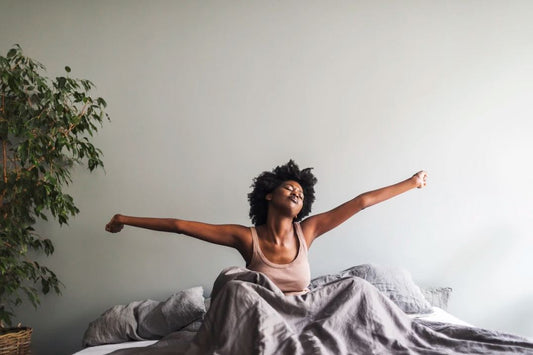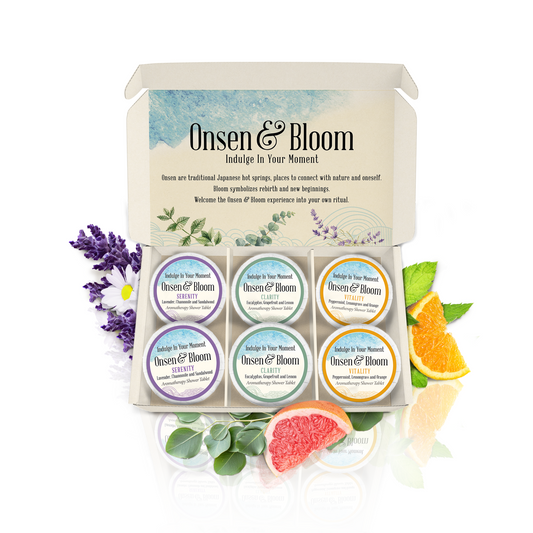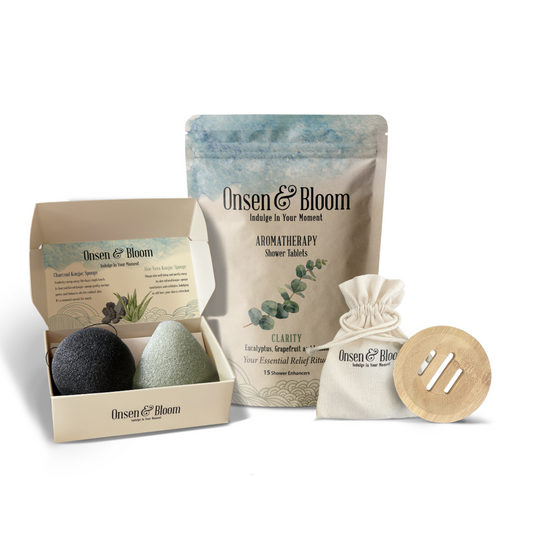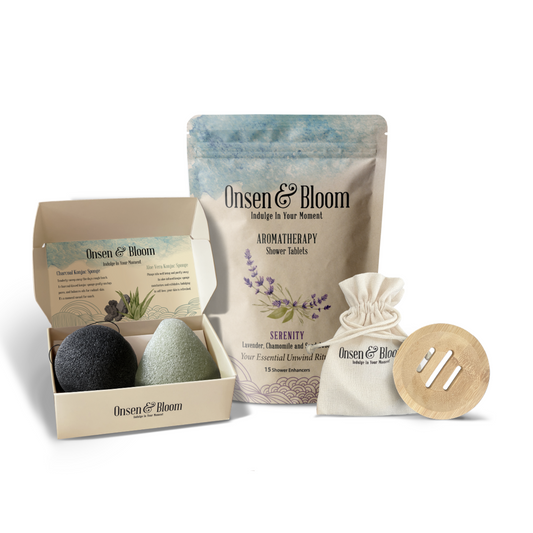In today’s fast-paced world, creating a calm and serene environment in your home is more important than ever. A space that fosters tranquility can provide a sense of peace and refuge from daily stress. Designing a calm aesthetic requires intentional choices across various elements, from furniture and lighting to scents and personal touches. So whether you are looking at homes for sale in Seattle, already renting an apartment in Boston, or moving to a rental house in Little Rock, here’s a guide on the best ways to promote a calm aesthetic in your home.

Prioritize a breathable and open design
Open spaces and good airflow are key components of a calm aesthetic. Keep your home layout spacious, with open pathways and large windows that allow natural light to flow in. Hannah from JCP Holistic shared this recommendation, saying that “A well-ventilated, open space with natural light can drastically improve mental clarity and relaxation. Position furniture to allow for comfortable movement, ensuring the space feels inviting rather than restrictive.”
Hannah also promotes a focus on mindfulness and balance, adding that “A dedicated space for mindfulness, whether for meditation, journaling, or simply unwinding with a cup of tea, reinforces relaxation. Keeping this area clutter-free and incorporating natural elements like plants or stones fosters a sense of grounding and balance.” In addition to Hannah’s stellar suggestions above, it’s also advisable to style your space to encourage introspection and quiet time, which is essential for mental clarity and relaxation.

Scents and aromatherapy to promote a calm aesthetic
As mentioned earlier, scents play an essential role in setting a calm ambiance. Not only are certain scents useful to aid in comfort and relaxation, choosing the right candles, incense dispenser or diffuser can add aesthetic appeal to your home.
Kristen Jakobitz, experienced health coach with Kristen Jakobitz Health Coaching LLC, notes that “Creating a relaxing space starts with engaging your senses in a way that signals your body to unwind. Use calming scents like lavender or eucalyptus with essential oils or candles to set the mood, and opt for soft, warm lighting to create a soothing atmosphere. Incorporate a spot for herbal teas or infused water to encourage mindful hydration.”
Experiment with different scents and see which ones resonate with you and create the most peaceful atmosphere in your home, however, eucalyptus and lavender are popular choices, with Tatiana from The Onsen & Bloom Team also being a proponent of their use.
Tatiana adds that “If you want to create a truly relaxing space in your new home, start with scent. Aromatherapy has a way of instantly shifting the mood, whether it’s the calming scent of lavender to unwind, eucalyptus for a breath of freshness, or citrus to brighten your day. Try adding a diffuser or even aromatherapy shower steamers to make everyday moments feel like a spa escape. It’s a small touch that makes a big difference in how your space feels!”
Essential oils and candles are a great way to infuse your home with calming fragrances, but there are other options as well. Consider using fresh flowers or room sprays with gentle, soothing scents like jasmine, sandalwood, or rose.

Design your space based on holistic principles
Considering the balance of elements such as light, space, energy, and materials is a great place to start when creating a calm aesthetic in your home. Amy Baratta from Holistic Home Designer is well versed on the subject, and notes that her “design philosophy for creating relaxing spaces centers on holistic principles. I begin by defining the space’s function and the feelings I want it to evoke, ensuring it harmonizes with the rest of the home.
My palette often features calming blues, greens, and warm earth tones, complemented by a variety of soft textures like cashmere throws, fur pillows, and kilim rugs. I also love incorporating warm wood furniture, such as a live-edge coffee table or a handcrafted wooden chair, to ground the space and add natural beauty.”
By creating a space that nurtures all aspects of your well-being — physical, mental, and emotional — you can cultivate a calming environment that enhances your overall quality of life.
Lighting, plants and music
Lighting, plants and music can not only add visually appealing elements to your space but also contribute significantly to a peaceful atmosphere. Natalie Pyrooz, spirit and nature-based living expert at Wild Heart Wellness shares the following tips to create a relaxation station, or home sanctuary:
Bring in the greenery: “Not only do living plants add an element of calming nature inside the home, but they clean and purify your indoor air, literally improving the quality of each breath you take! If you don’t have a lot of light, there are many affordable options for simple LED grow lights that can help your plants thrive. If you’re not a green thumb, try treating your space to a weekly bouquet of cut flowers to brighten it up.
Invest in nice lighting: You don’t have to spend an arm and a leg, but adding a variety of light sources to your home (think lamps, candles, string lights, track lighting) can make a huge difference in the feel of your space. Low lighting is a wonderful way to ease yourself into the evening and improve your ability to fall asleep.
Music sets the mood: Find a few playlists on your platform of choice that invite relaxation: whether they are nature sounds, calming music, or you could even get your own singing bowl. The frequencies of the sound we hear can play a big part in shifting our energy, so explore things that have a soothing effect on your nervous system.”

Kamy from PURE Holistic is also a proponent of utilizing holistic elements in your home, adding that “Soft, warm lighting or Himalayan salt lamps can create a soothing ambiance, while gentle music, nature sounds or white noise help to drown out distractions. Introduce the soothing presence of water with a small tabletop fountain or an aquarium to enhance relaxation and flow. Lush greenery, such as aloe vera or peace lilies, can purify the air and bring a grounding energy to your space. Consider a cozy corner with a supportive chair, floor cushions or a yoga mat for meditation, stretching, or quiet reflection.”
We also advise that for lighting, table lamps, floor lamps, or pendant lighting with dimming options are ideal for setting a relaxing tone, while being mindful of plant placement can keep your space visually appealing — aim to keep them in areas where they can be admired without being overbearing.
Regular decluttering to maintain a tranquil environment
A cluttered space can quickly create a chaotic environment, so decluttering is essential when maintaining a calm aesthetic. Take time to regularly tidy up and organize your home, removing unnecessary items that do not serve a purpose. When carving out a relaxing corner for yourself, Heather Carota from Zen Zone Wellness Center suggests that you “Declutter a corner and have very minimal items in this space.
Items can include: a comfortable place to sit, calming lighting like a Himalayan salt lamp, a diffuser with an essential oil smell of your choice that calms you like lavender or maybe a citrus oil of sorts, and perhaps a plant to bring fresh oxygen and life to your space.” When decluttering, use storage solutions such as baskets, bins, or shelves to keep items neatly tucked away. The goal is to create a sense of spaciousness and simplicity in every room when promoting a calm aesthetic ideal for relaxation.

Add personal touches and artistic elements
Incorporating personal or artistic elements into your home’s design can add a sense of individuality and warmth. Display artwork, photographs, or objects that hold sentimental value to you. Surround yourself with pieces that inspire positive emotions or evoke memories of peaceful moments. This tip comes to us from Jessica Greiner, M.S., from Artful Mind, who shares that “Creating an inviting and relaxing space in your home begins with choosing a quiet area where you can unwind, free of clutter, intentionally selecting items that bring you joy.
Incorporate soft pillows and handmade chunky blankets for comfort, along with soothing scents, such as chamomile and lavender to promote relaxation. Add artistic elements, maybe a tactile art board to engage your senses, or a pencil and sketchpad to encourage creative expression.”
Also consider adding personal touches through handcrafted items or sculptures. Select artwork or decor that resonates with the calm aesthetic, such as abstract pieces in muted colors or nature-inspired themes.

Must-have accessories and appliances
Accessories and appliances can help support the calm aesthetic of your home while being both functional and decorative. Items like a white noise machine, a soft throw blanket, or a comfortable reading chair can enhance the overall atmosphere of tranquility. Sian Victoria, expert lifestyle, travel, and beauty blogger, shares their best accessories and appliances to consider to promote a calm aesthetic in your home below:
My cozy relaxation station includes a comfy armchair in the corner of my room and a footrest and blankets. When I need to unwind, I switch on a Himalayan salt lamp; it’s kinder on the eyes and tells my mind it’s time to relax. I’ll sip a warm drink with 100% cacao powder and Barista oat milk for an antioxidant boost and light a soy lavender candle, which helps make me sleepy and calm. I’ll either watch TV, read a book or doodle. When it is time for bed, as I’m a light sleeper, I’ll wear an eye mask and switch on a rain sound machine to minimise disruptions. I then sleep on a satin pillowcase to benefit my skin and hair. Sian Victoria
Make sure that the accessories you choose complement the overall calming theme of the space. Opt for minimalist designs and neutral colors that seamlessly blend into the environment to create the ultimate aesthetic appeal.

Multi-use furniture and food/drink options
Multi-use furniture can help make the most of your space while keeping it clutter-free, and a dedicated area for preparing and enjoying tea or snacks can contribute to your home’s calm aesthetic. Whether it’s a small tea station in the kitchen or a cozy corner for enjoying your favorite hot beverage, having a space where you can unwind with a cup of tea promotes relaxation. Dr. Lara May shared this tip with us, and elaborates on how to transform your home into a personal oasis: “Start with calming scents, complemented by mood lighting from soft lamps or Himalayan salt lamps.
Incorporate multi-use furniture, such as a cozy meditation cushion for mindfulness moments and a comfy tea corner for reading. Don’t forget to create a small altar with crystals and candles to enhance your space’s energy. Lastly, ensure a healthy food corner and a tea station are close at hand to nourish your body and spirit. With these thoughtful additions, you’ll cultivate a serene atmosphere perfect for unwinding after a long day.”
Multi-use furniture such as a sofa bed, fold-out desks, or storage ottomans provides both functionality and style, and calming herbal teas like chamomile, mint, or valerian root, which can help soothe the mind and body. Consider incorporating a stylish tea set or jars of loose-leaf tea.

Incorporate natural elements and matching colors
Natural fibers like cotton, linen, wool, and jute can create a tactile connection to nature and promote a sense of calm. Incorporate these materials into your bedding, rugs, cushions, and curtains for a soft, grounding effect. Natural fibers not only look beautiful but also feel comfortable and breathable, which adds to the overall sense of relaxation in your home.
Karena Zolner, executive director at Tulum Wellness Spa advises to “Design your meditation space with intention” and suggests selecting “colors that evoke serenity, like soft blues and greens, and introduce natural textures through woven textiles or bamboo accents. Begin with soft, warm lighting and the gentle aroma of lavender or sandalwood. Incorporate natural elements like smooth stones or small plants to ground your energy. Finally, choose a comfortable cushion or mat, allowing you to fully immerse yourself in the present moment.”
Additionally, color plays a significant role in creating a harmonious and calm aesthetic in your home. Stick to a cohesive color palette that promotes tranquility, and avoid harsh or overly vibrant colors that can overstimulate the senses. Carmen Alfaro, owner of Meditation Room Supplies shares some best practices when choosing calming colors for your home:
“Make sure that everything matches so it’s pleasing to the eyes, which in turn will help relax your body and mind. Most popular relaxing combinations can be a neutral color such as a beige with a softer or muted color for contrast.”
In addition to the above color combinations, Carmen advises acquiring “a soft, fluffy rug that matches with the pillow on the seating to define the relaxation station area. Not only will this create a cohesive look, but you can also use the rug to play with your pets, children, or lay down to do some stretches to relax the body.
For example, beige and sage green are very popular. This combination works whether you have a boho, rustic or farmhouse decor style. Other color combinations can be light gray and white, most popular for modern and Scandinavian decorations.”
Another great way to promote relaxation at home is to meditate. Check out this great page on creating a meditation corner to learn more!

Create a calm environment in your bedroom
Your bedroom should be a sanctuary for rest and relaxation. This space is where you begin and end each day, so it’s essential that it promotes comfort and a calm aesthetic. Choose soft, neutral colors such as muted greys, pastels, or whites for the walls and bedding. Opt for simple, streamlined furniture that doesn’t overwhelm the space.
When it comes to promoting comfort, note that “Comfort is personal, and the best way to create a truly relaxing bedroom is by making sure your mattress fits your body type and sleep position needs,” shares Ryan Poppie, president and chief bedmaker at The Beloit Mattress Company.
Ryan adds that “For couples, I always suggest split mattresses with adjustable bases — each person gets the support they need without compromise. Even small changes, like using separate sheets and comforters, can make a huge difference in “minimizing sleep disruptions.” And of course, breathable, high-quality bedding helps regulate temperature for an even better night’s sleep. When your sleep setup is dialed in, you wake up feeling your best — every single day.”
You should also consider adding a comfortable rug to create warmth and texture underfoot, and incorporate soft lighting options like table lamps or wall sconces to create a soothing ambiance.
Creating a calm aesthetic in your home: Wrapping up
With thoughtful consideration of these elements, you can create a home that promotes calmness and tranquility. Our experts have shown that a calm aesthetic is not just about visual appeal — it also involves managing sensory input. From the layout of your space to the scents that fill the air, every detail can contribute to an environment that supports relaxation and well-being.







